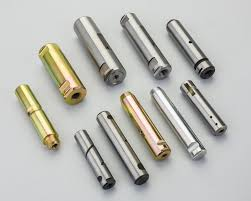Introduction
A quality pin manufacturer & supplier is the backbone of many industries from automotive and electronics to furniture, medical devices, and consumer goods. Pins might seem simple, but precision in material selection, manufacturing tolerances, surface treatment, and supply reliability makes all the difference between a dependable end product and repeated failures. In this guide we’ll cover what differentiates leading manufacturers, how suppliers ensure consistent quality and traceability, and what buying organizations should evaluate when selecting a partner. This introduction sets the stage for procurement professionals, engineers, product designers, and buyers who need to understand the technical and commercial aspects of sourcing pins. We focus on objective criteria like certifications, testing, manufacturing capabilities, turnaround times, and sustainability practices all framed to align with Google EEAT (expertise, authoritativeness, trustworthiness) principles so the guidance is practical and credible.
Materials & Design Considerations
Choosing the right material and design for a pin is the first step toward a durable, fit-for-purpose component. Manufacturers commonly work with stainless steel grades (e.g., 304, 316) for corrosion resistance, carbon steels for strength, brass for conductivity and aesthetics, and specialty alloys for high-temperature or corrosive environments. Design factors include shaft diameter, length, head style (flat, domed, countersunk), tolerance class, heat treatment, and whether the pin requires knurling, grooves, or press-fit features. High-volume suppliers will offer engineering support tolerance stack-up analysis, finite element feedback for load-bearing pins, and recommended surface finishes (passivation, plating, black oxide) to optimize longevity and assembly. When a supplier demonstrates materials traceability, material certificates (like EN 10204), and design-for-manufacture feedback, they materially reduce risk in production and assembly lines.
Manufacturing Processes & Quality Control
Reliable pin production depends on repeatable manufacturing processes and robust quality control. Typical production techniques include cold heading for high-volume shaped pins, precision turning for tight-tolerance shafts, and CNC operations for complex features. Heat treatment is applied where hardness and fatigue resistance are critical. Quality control systems should include incoming material inspection, in-process dimensional checks (using CMMs and micrometers), batch traceability, and end-of-line testing such as hardness tests, salt-spray for corrosion resistance, and tensile or shear tests when required. Leading suppliers maintain documented quality management systems like ISO 9001 and, for regulated industries, IATF 16949 (automotive) or ISO 13485 (medical). Transparent sampling plans, accessible inspection reports, and willingness to run PPAP (Production Part Approval Process) or first article inspections demonstrates a supplier’s commitment to consistent part performance.
Customization, Lead Times & Logistics
Many buyers need pins that are not off-the-shelf custom alloys, specific coatings, laser etching, or kitting for assembly lines. Reputable manufacturers offer design assistance, rapid prototyping, and small-batch pilot runs before full-scale production. Understanding a supplier’s minimum order quantity (MOQ), typical lead time, and production capacity is essential; these vary widely depending on process (cold heading vs. CNC turning) and finishing steps. Logistics capabilities matter too vendors who manage bonded warehousing, just-in-time deliveries, kanban replenishment, and reliable export documentation reduce buyer inventory costs and supply-chain friction. For international procurement, check the supplier’s export compliance, Incoterms offered, and ability to provide consolidated shipments or drop-shipping directly to multiple manufacturing sites. Clear SLAs for delivery, quality hold procedures, and contingency planning (e.g., secondary sources, buffer stock) are hallmarks of mature suppliers.
Choosing a Trusted Partner
When selecting a pin manufacturer & supplier, apply an EEAT-style checklist: Expertise (engineering support, proven process capabilities, sample engineering data); Authoritativeness (industry certifications, client references or case studies, published material like whitepapers or design guides); Trustworthiness (transparent quality records, traceability, contract terms, and ethical sourcing policies). Evaluate factory audits, technical responsiveness during RFQs, willingness to provide material certificates and inspection plans, and visible commitment to continuous improvement (Kaizen, Six Sigma). Request references from clients in comparable applications and ask for demonstrable metrics defect rates, on-time delivery percentages, and corrective action histories. Don’t skip cybersecurity and IP protections if you share proprietary designs. A supplier that scores well on these criteria will be easier to work with long-term and will help you reduce production risk and lifecycle costs.
Conclusion
Pins are small parts that carry big responsibility: they hold assemblies together, locate components, and ensure safe operation across countless products. Choosing the right pin manufacturer & supplier requires more than price comparison it needs an assessment of materials expertise, production capability, quality systems, customization services, and reliable logistics. Use documented evidence (certificates, inspection reports, references) and an evaluation framework to separate transactional vendors from strategic partners. By prioritizing traceability, industry certifications, engineering support, and transparent supply-chain practices, procurement teams and engineers can secure a partner that delivers consistent quality and scales with product needs, reducing lifecycle costs and protecting brand reputation.
FAQs
Q1: What is a typical lead time for custom pins?
A1: Lead times vary by process and complexity. For standard turned or off-the-shelf pins, lead times can be one to three weeks. Custom parts that require tooling, special heat treatment, or bespoke surface finishes may take four to eight weeks for first production runs. Ask suppliers for lead-time guarantees and options for expedited prototyping.
Q2: How do I verify material and quality before buying?
A2: Request material certificates (e.g., EN 10204), first article inspection (FAI) reports, sample parts for testing, and evidence of the supplier’s quality system (ISO certificates). For critical applications, require documented testing such as hardness, tensile, and salt-spray corrosion results tied to lot numbers.
Q3: Are there environmentally friendly options for pin production?
A3: Yes. Choose suppliers that use recyclable materials, offer RoHS-compliant finishes, minimize hazardous plating chemicals, and publish sustainability policies. Additionally, lean manufacturing and waste-reduction programs lower environmental impact and often improve cost-efficiency.
